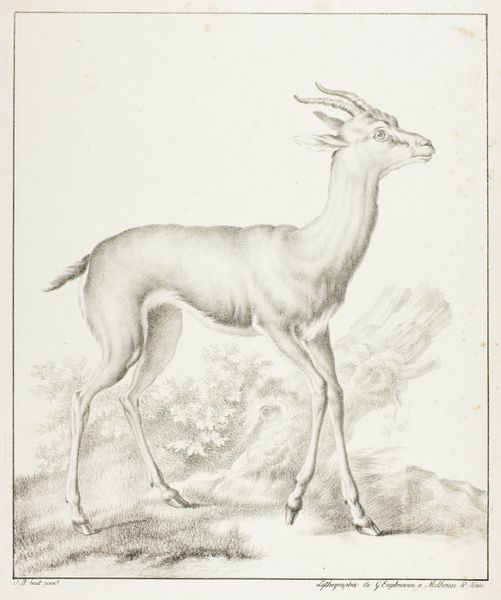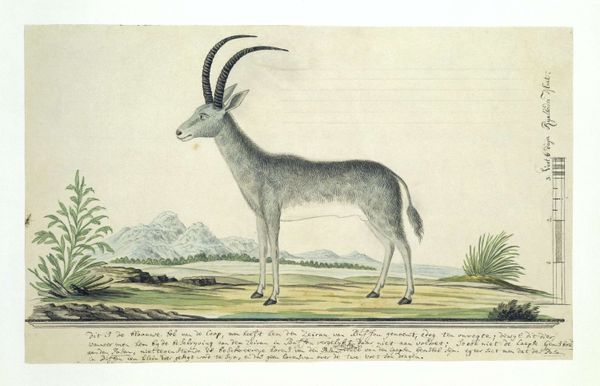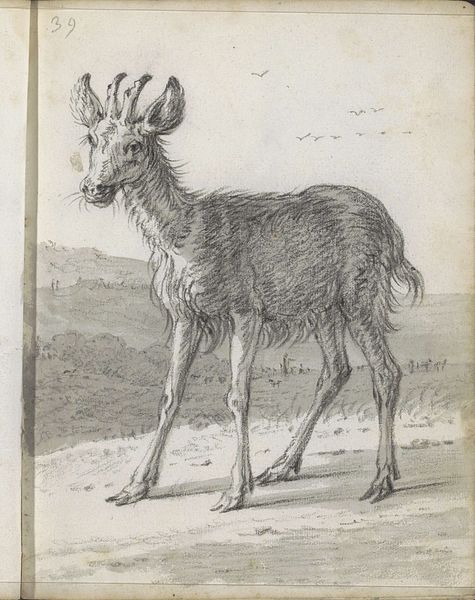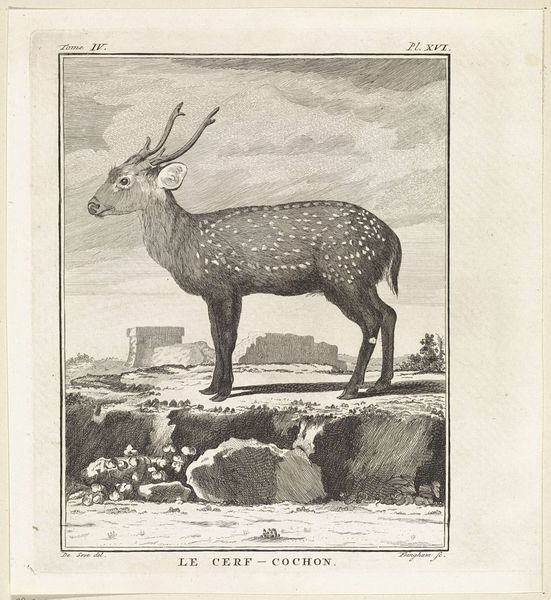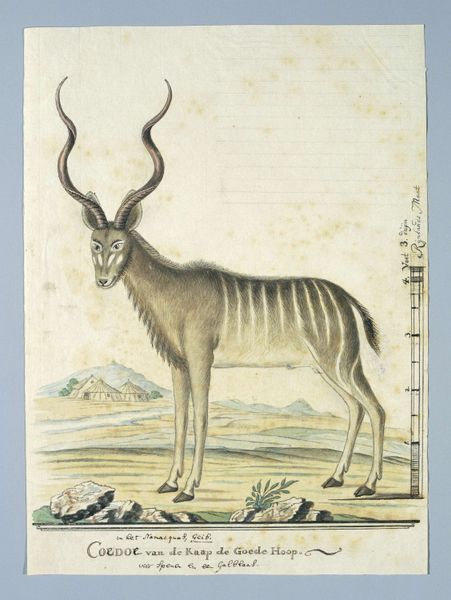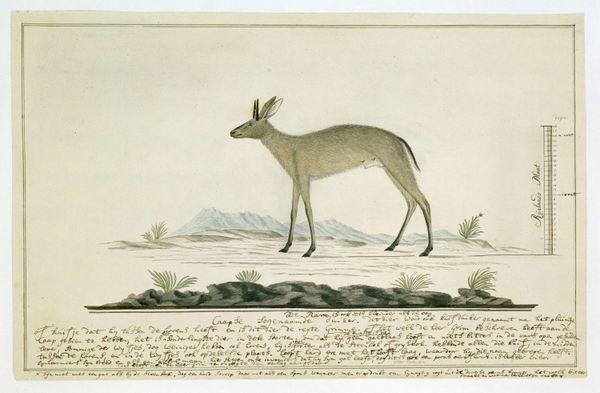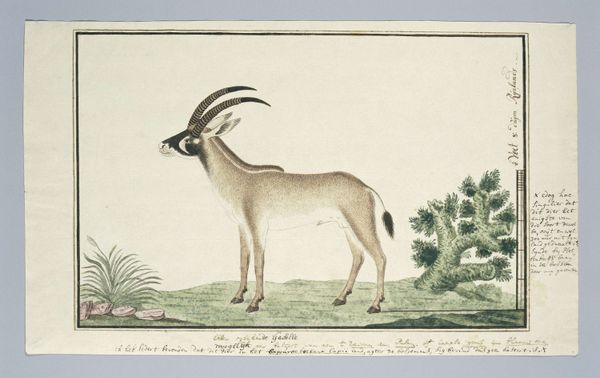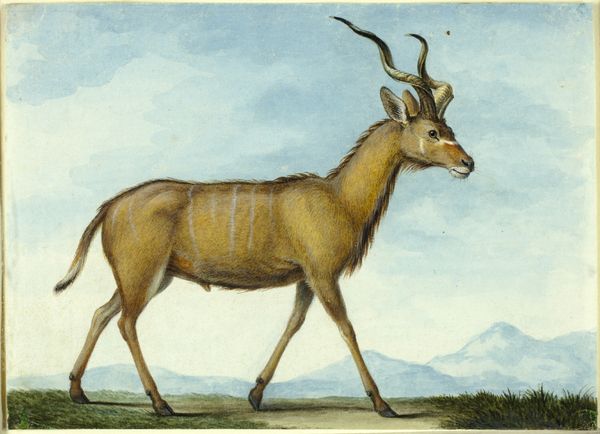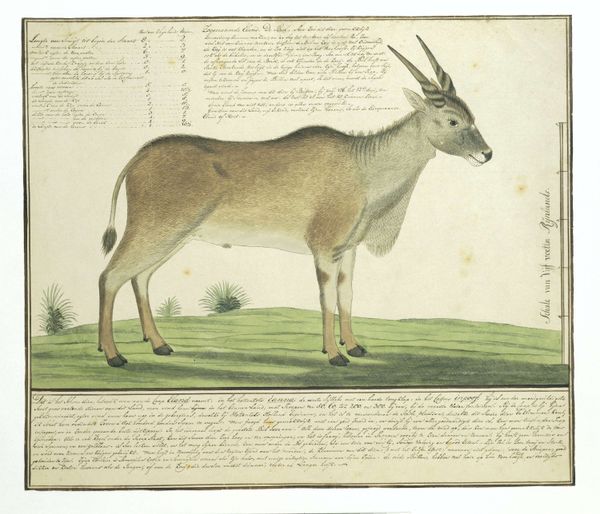
drawing, print, etching, engraving
#
portrait
#
drawing
#
animal
# print
#
etching
#
landscape
#
figuration
#
form
#
pencil drawing
#
line
#
genre-painting
#
history-painting
#
engraving
#
realism
Dimensions: height 205 mm, width 162 mm
Copyright: Rijks Museum: Open Domain
This "Steenbok" print was made by Barent de Bakker using etching; a process that intertwines craft, design and materiality. Etching involves coating a metal plate with a waxy, acid-resistant substance known as a ground. The artist then uses a needle to draw an image into the ground, exposing the metal underneath. Next, the plate is immersed in acid, which bites into the exposed metal, creating recessed lines. The longer the plate sits in the acid, the deeper the lines. The plate is then inked, and the surface wiped clean, leaving ink only in the etched lines. Finally, paper is pressed against the plate, transferring the ink and creating the print. The process demands planning and skill. The depth of the lines determines the darkness of the printed image; the artist has to carefully control the process to achieve the desired result. Yet, like other forms of printmaking, etching allows for the creation of multiple copies, making images accessible to a wider audience. Appreciating the blend of skill, process, and accessibility allows us to understand the artistic and social significance of prints like this.
Comments
No comments
Be the first to comment and join the conversation on the ultimate creative platform.
